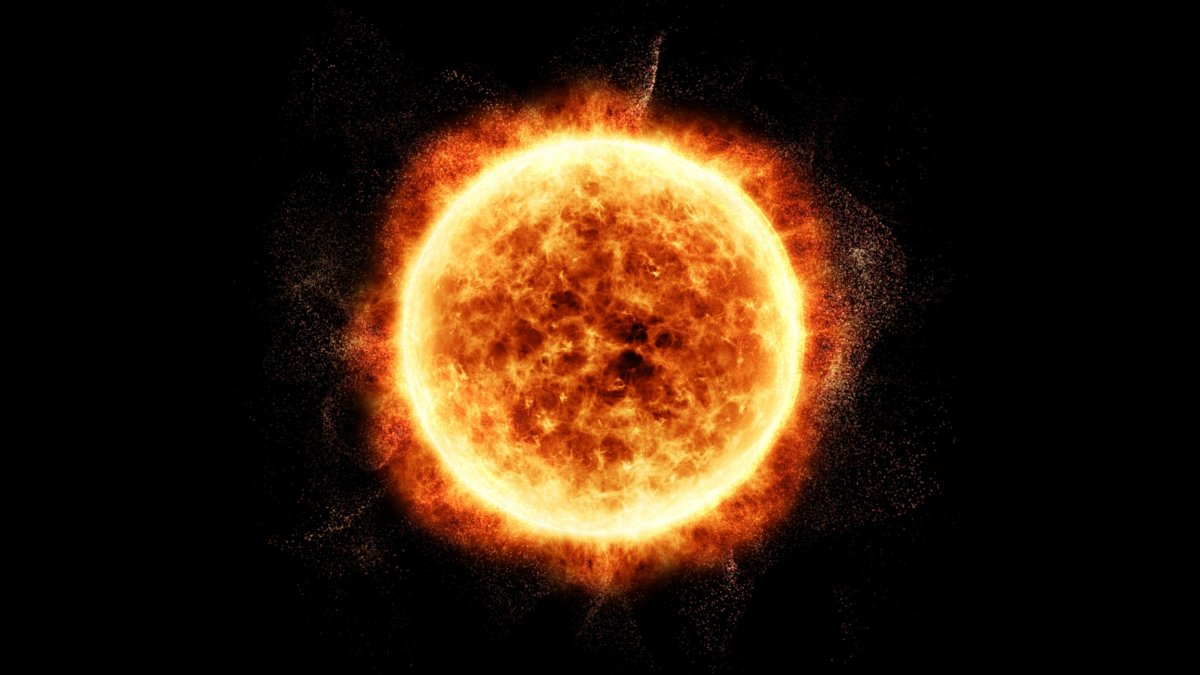Scientists have discovered evidence of one of the biggest solar storms ever recorded, when high-energy particles unleashed from the sun bombarded Earth just over 2,600 years ago. Should a similar event hit us today, it could have a devastating impact, potentially knocking out global communication systems, satellites, electrical grids and air traffic systems.
The sun is constantly sending a stream of charged particles toward Earth via the solar wind. However, when solar storms take place on the sun's surface, they can lead to a massive surge in these particles hitting Earth.
In 1859, a powerful geomagnetic storm—now known as the Carrington Event—caused by a coronal mass ejection hit Earth, causing widespread electrical disruptions and blackouts. If a similar-sized solar storm hit the planet today, it would cause an estimated $2 trillion in damage.
Evidence of solar storms hitting Earth in the past can be found in ice cores—samples of ice that formed over the past 100,000 years. Researchers are able to analyze the ice to find out when Earth was hit by an unusually high concentration of high-energy cosmic rays.
Previously, scientists have used this technique to find two other enormous solar storms—one in A.D. 775 and another in A.D. 994. The latter was, to date, the biggest solar event on record.
In a study published in PNAS, Raimund Muscheler from Sweden's Lund University and colleagues found evidence of another huge solar storm on the same scale as the one that hit in A.D. 775 Using two ice cores from Greenland, the team found the "enormous" storm took place around 2,610 B.C. "Our event was about 10 times stronger than any high-energy event observed during the past 70 years," Muscheler told Newsweek.
This is only the third major solar storm event to be documented. Researchers say the current findings could mean the frequency of these "potentially devastating" events has probably been underestimated.
"The first discovery of such an event was quite recent," Muscheler said. "I am sure these are recurring features of the sun, and with a systematic search we will certainly find more. We just looked at the last 3,000 years, and we certainly can get good enough data for the past 12,000 years."
Explaining what this means for the risk posed, he said we now have three very big events taking place in the past 3,000 years. The researchers now plan to carry out a systematic search to better understand just how often big solar storms hit Earth, so we can be better prepared for them.
Leon Golub from the Harvard-Smithsonian Center for Astrophysics, who was not involved in the research, said the findings indicate a storm far bigger than the Carrington Event and hundreds of times larger than anything recorded during the space age.
"Our highly interconnected technological society has become vulnerable to disturbances from the sun," he told Newsweek. "Assets in space, including satellites and humans, need to be protected, and even systems on the ground are at risk from large solar events."
Matthew Owens, a professor of space physics at the U.K.'s University of Reading, who was also not involved in the study, told Newsweek the findings were interesting.
"Space weather is a potential threat to power systems, communication/GPS satellites and airline passengers and crew," he said. "Much of what we know about space weather is predicated on data from the space age. But this study shows that the sun is capable of producing far more energetic—and possibly more damaging—events than we've witnessed in the last 50 years.
Owens added, "This kind of work is vital to inform the engineering of space- and ground-based technologies in order that they are able to survive the worst-case space-weather scenario so that the sun doesn't catch us unprepared."

Uncommon Knowledge
Newsweek is committed to challenging conventional wisdom and finding connections in the search for common ground.
Newsweek is committed to challenging conventional wisdom and finding connections in the search for common ground.
About the writer
Hannah Osborne is Nesweek's Science Editor, based in London, UK. Hannah joined Newsweek in 2017 from IBTimes UK. She is ... Read more
To read how Newsweek uses AI as a newsroom tool, Click here.








